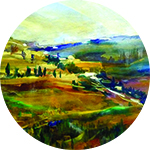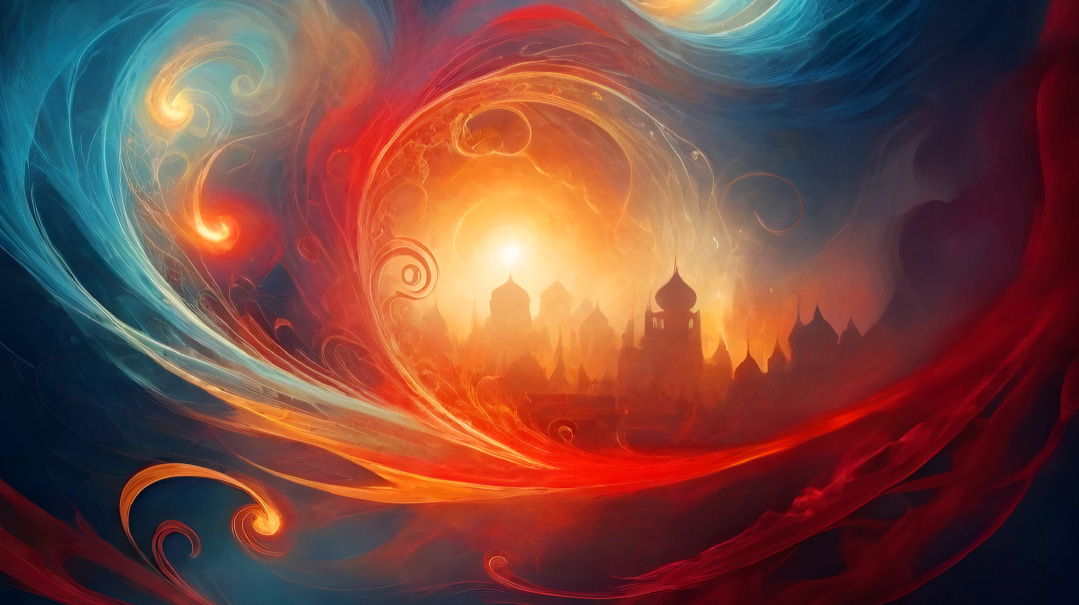Many Hues, One Source


Always be cognizant of “living in Hashem’s plan”
Every loss in Klal Yisrael is part and parcel of a greater mourning. Each time a mourner tears his garment in a tangible expression of grief, we remember the continuous rent in our nation, as we pine to see the long emptiness on our Har Habayis filled. Each tragedy echoes with the grief of aveilei Tzion v’Yerushalayim.
Our approach to an individual’s pain at the time of the loss of a loved one should be a reminder of how we should be grieving for our Beis Hamikdash.
“We must always be cognizant of ‘living in Hashem’s plan.’ ”
This was the direction that our rebbi, Rav Tzvi Berkowitz shlita gave me when I asked him how I was to guide a very bereft community after the Far Rockaway–Five Towns area suffered multiple painful losses over Pesach.
A Rainbow of Hues
Rav Berkowitz explained that the way we should respond to tragedy in both our personal lives and our lives as a klal is determined wholly by the guidelines of our Torah. What should engender joy for a Jew is not what the world believes is joyous and uplifting, but what the Torah highlights for us as opportunities for simchah. So too, the Torah, authored by HaKadosh Baruch Hu Who fashioned our emotions, understands our sadness, and defines the reactions to sadness that befit a Torah Jew.
“Banim atem l’Hashem — You are children to Hashem, your G-d. Do not cut yourselves or make any baldness between your eyes when there is a death.” (Devarim 14:1) Rashi (ibid.) explains that this is how the Emorites would react when losing a loved one; it is not a practice that befits the banim, the children of Hashem.
The Maharal in his Gur Aryeh, further expounds on Rashi and defines the relationship of banim to be paramount during times of loss. “Banim,” as he describes it, is a dual-sided direct relationship between Hashem and His people, Klal Yisrael, between our Father in Heaven and His children — us!
The uniqueness of this relationship is built on the oneness of Klal Yisrael and the Oneness of Hashem. As the Rambam writes in his Thirteen Principles, “Hashem is One in Oneness like no other Oneness.” Not one of a count, one of kind.
Rav Gedalia Schorr in parshas Noach portrays that Oneness based on the Gemara (Chagigah 16). “Whoever stares at a rainbow has no care for the honor of his Maker.”
Why, asks Rav Schorr, is a rainbow any greater honor of Hashem than the multitudes of amazing creations that fill His creation? He points to the fascinating construction of a rainbow, which is caused by the light of the sun when it emerges, refracted in glorious colors, through a prism created by the moisture of rain. Those peering up at this spectral magnificence see multiple colors, while in fact, there is but one source of light — the sun shining strongly above.
So too, explains Rav Schorr, Hashem may present Himself to us in myriad “colors” — yet when we view His actions as “judgment,” “kindness,” “anger,” or “happiness,” we must understand that the many hues all emanate from one supreme Source.
With this knowledge, then, we can understand that the overly demonstrative practices of the Emorites are a result of their belief in a fragmented god. So the Torah cautions us, “banim atem.” You are Hashem’s children, the Torah is reminding us. You cannot mimic their ways, you cannot relate to their reasoning. Your reaction to death is in the same rubric as your reaction to all that happens in life, since you understand that all experiences originate from the one ever-perfect G-d.
Trust in Our Father
Know, explains the Ibn Ezra, that Hashem loves us more than any father could ever love a child. And like children who must accept their parents’ decisions even when they do not understand them, we should have that implicit trust in our Father.
The Rambam’s words are poignant and stirring: “It is not fitting for you to cut yourselves... when there is a loss, even if the person died as a youth. But the Torah does not prohibit crying, because our nature is to be aroused to cry when separating from a loved one, even if they are still living but have merely traveled far away.”
Imagine a father who sends his son off to learn a trade and work in the big city, says the Ohr HaChaim Hakadosh. The lad accomplishes, forges friendships, finds business associates. Imagine how the father and son will celebrate when the father summons his boy home, letting him know he has accomplished his task. The son, finally with his father, lacks nothing — but the people he left behind are bereft of him. And so we are permitted to mourn a death — but not the extreme reactions that would indicate that the one who has died is suffering.
Emerging from Pain
As we progress through the calendar and enter the time when we sense Hashem’s greatest pain, we must feel the requisite sadness for the great loss of the Beis Hamikdash. Yet we must emerge from this time with the words of the great paytan Rav Shlomo HaLevi Alkabetz in his timeless Lecha Dodi.
“Get up! Arise from the dirt — put on your glorious clothes, my people.”
Just as an individual cannot “over mourn,” we, as a people, cannot spend all our days shrouded in grief.
I recall the first wedding I attended after ending the year of aveilus for my father ztz”l. The chuppah passed with little discomfort, as did the first course. It was when the music started and all the women ran to greet the kallah that I felt myself faltering. Could I dance? Could I feel that boundless joy?
A friend noticed me hovering near the circle and casually stretched out her hand, inviting me to join. I found myself dancing again! “You probably thought you were doing something inconsequential,” I later told her. “But you helped me traverse from aveilus to simchah.”
Likewise, I recall hearing a shiur from Rav Ezriel Tauber in which he recounted many of his experiences as a hidden child during the Holocaust and a teenager during the years post liberation.
Rav Tauber explained that the most disappointing moment for many a Holocaust survivor was when they were liberated by the Russian, American, and British troops. They had been so confident that they would be freed by none other than Mashiach Tzidkeinu!
Rav Michoel Ber Weissmandl ztz”l had organized an ad hoc yeshivah for boys who had missed those formative skill-learning years. One day, he gathered all of the boys and proclaimed, “You are all sitting on packed suitcases. Get up and unpack!”
Rav Weissmandel went on. “Mashiach may come today, tomorrow, next month, in ten or one hundred years. Until then, we must get up and we must build!”
Persevering with Joy
Our pain is present and our pain is real, but our mission is to persevere. We must celebrate our trust in the Almighty as a banner of courage and pride.
Rav Hirsch elaborates on the prohibition against cutting oneself in mourning for a death (Kedoshim 19:28), contrasting the practice with the way an avel rips his garment. The rent in the garment symbolizes the loss of a loved one and the chasm it has created in the mourner’s world. Self-mutilation implies that the loss has caused a complete breakdown of self.
“No matter how dear and precious a person may be to us, his death must not negate or diminish our own lives. The pagan notion that death is inimical to life is one that we as Yidden never subscribe to. Throwing away even a fragment of your life is heretical in its core.
“For it is He who commands life upon you, He wills that you live to serve Him — until He calls you to your eternal home… In fact, the loss of one who meant a great deal to us must spur us on to redoubled vital energy, so that we may help fill the gap that death has left in the work of serving G-d.”
The gap between us and the Bais Hamikdash widens each year. As it does, the void is one that we must know how to fill. Mitzvos and limud Torah can bring back the kedushah that are missing due to the loss of the Mikdash — but both can only be fully experienced in a state of simchah.
May that simchah carry us all to the time when “our mouths will be filled with joy and our tongues with gladness.”
Originally featured in Family First, Issue 599. Rebbetzin Aviva Feiner is the rebbetzin of Congregation Kneseth Israel (The White Shul), and menaheles of Machon Basya Rachel Seminary, both in Far Rockaway, New York.
Oops! We could not locate your form.






